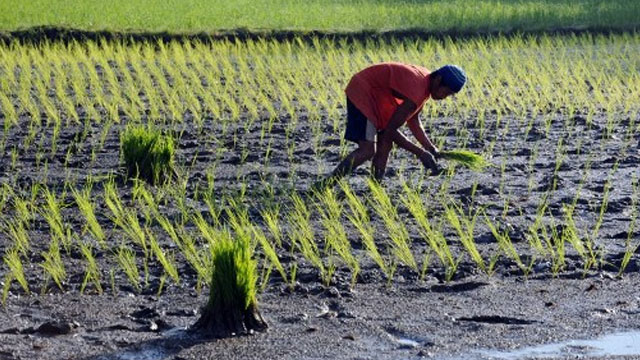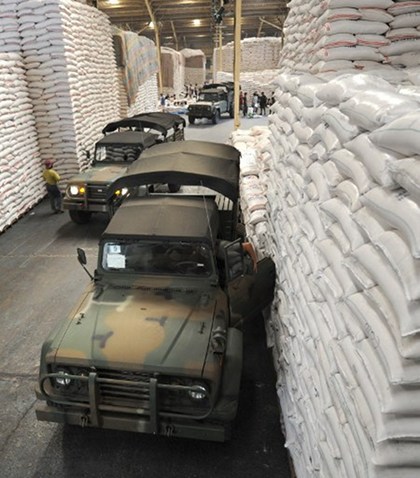SUMMARY
This is AI generated summarization, which may have errors. For context, always refer to the full article.

MANILA, Philippines – President Benigno Aquino III has bravely proclaimed the country will become self-sufficient in rice in 2013. The target is a nice sound-bite in the Philippines, the world’s biggest rice importer, especially with mid-term elections coming up in May of next year.
The problem is the Philippines will fail to hit the target, and I believe imports could hit 2 million tons next year, which would be close to the record amount of imports set a few years ago. The reason for this can be found by just adding things up. Bill Clinton called it arithmetic.
You tally production and warehouse stocks on one hand and then look at consumption and how much rice is in government and commercial warehouses on the other. You also need two months’ worth of inventories, maybe three months. That gives you a rough idea what the supply/demand balance is in the Philippine rice market.
The production side of the ledger goes this way: Milled rice production in the Philippines in 2011/12 should hit a little over 11 million tons, separate forecasts by the Philippine government’s Agriculture Department and a report by the U.S. Agriculture Department attaché at the U.S. embassy in Manila said.
In the 2012/13 season, output may go up to 11.5 million tons. The USDA attaché report believes Philippine output would remain flat at 11 million tons. The attaché reports are compiled by U.S. agricultural experts at their embassy in Manila but they are not official USDA data.
The amount of rice stored in government warehouses is enough for 15 days of consumption and the amount in commercial warehouses is good for 16 days, the Agriculture Department said.

The government would normally include the rice in private households to pad the numbers a little bit. All Philippine households store a small amount of rice, but they should not be included because that grain is not in the domestic market at all. At best, the country only has one month worth of rice stocks in warehouses. That’s wafer thin.
Let’s break down the consumption side of the equation. The rate of daily rice consumption by Filipinos stood at 33,000 tons in 2010 although it should be closer to 35,000 tons by this time just because the number of people keeps increasing. At 100 million, annual consumption of milled rice in the Philippines would be around 13 million tons in 2013.
“Despite projected gains in rice output, the country is expected to remain a rice importer…as the population continues to grow and a safe level of stocks is maintained for food security reasons. This level is assumed to be at least 2 months of equivalent consumption, which is even lower than the historical 30-year average of 3 months,” an Asian Development Bank report in August concluded.
That is one of the reasons why the USDA attaché feels Philippine rice imports in 2013 will remain at 1.5 million tons.
The wildcard in all this is the weather.
The Philippines, on average, gets 20 typhoons per year. In 2012, the country has lucked out because many of the typhoons did not hit major rice growing areas or caused severe damage there. When you throw in climate change and the resulting unpredictability of extreme weather events, it would seem highly unlikely that the Philippines will be spared a hit from a major typhoon in 2013, especially to a vital rice-growing region. The new normal is the Philippines will get an extreme weather event.
It is also becoming harder to expand amount planted to rice in the Philippines to 5 million hectares. The amount currently stands at 4.35-4.66 million hectares, according to government estimates. Vietnam has about 7.5 million planted to rice while Thailand has10.25 million hectares, more than double what the Philippines had. If a major rice growing area is damaged, the already sizable gap between production and consumption can only widen, not shrink, as the government fervently hopes.
If Philippine milled rice production is 11.3 to 11.5 million tons and consumption is 12.9 to 13 million tons, the Philippines will import around 1.3 to 1.8 million tons of rice next year. If the weather is bad, the amount can easily expand to 2 million tons.
Like I said, arithmetic.
The Philippine Commodities Digest is a weekly publication of A & V Media in New Jersey, providing a roundup of developments and trends in the country’s key farming and mining sectors. It is read by traders, analysts, investors and followers of the Philippine agricultural market as well as the country’s mining industry.
Add a comment
How does this make you feel?
There are no comments yet. Add your comment to start the conversation.